If you’re looking for the minestrone soup, you won’t find it. There’s no one recipe. In general, minestrone soup is something the Italians have been making for centuries, sometimes because they had to. There’s a long history to this soup; one I’ll share with you below. For now, know that minestrone soup is healthy, tastes great, is inexpensive, and is easy to prepare. It’s one of my favorite soups and that’s why I decided to turn to one of my favorite chefs to see how he goes about putting his version together. If you didn’t catch the title, that chef is Gino D’Acampo. Gino has been cooking Italian food since birth and his recipe is, simply put, very good. It’s straightforward and it works. I like it a lot.
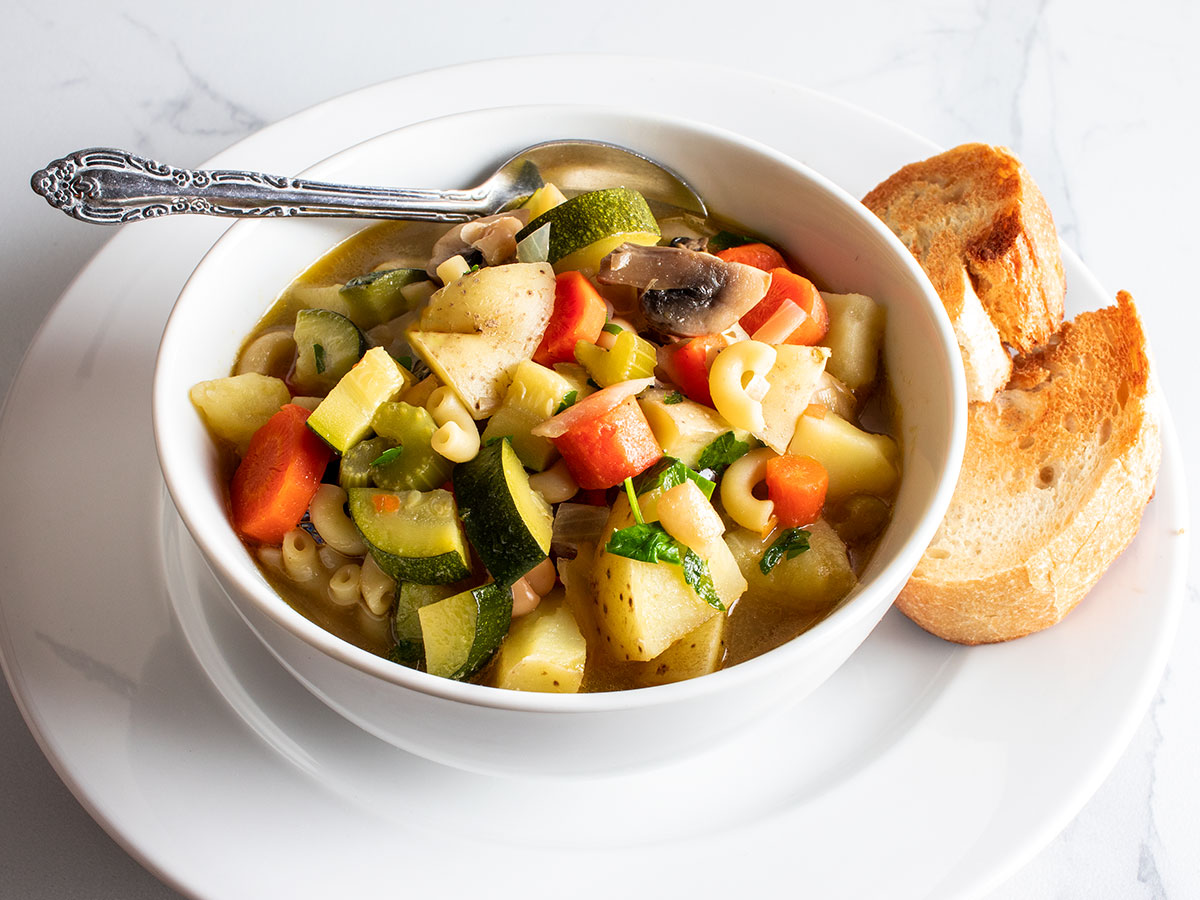
What is Minestrone Soup?
Minestrone soup comes from Italy. It’s a substantial/hearty soup that consists of vegetables, meats, pasta, and/or rice. Some of the common vegetables you’ll see include beans, carrots, celery, onion, spinach, tomatoes, zucchini, and whatever else is in season. If meat is added, nine times out of ten, that meat will be varying qualities and types of ground beef. Most people add small pasta shapes (shells, elbows, and sometimes spirals) to their minestrone and some even add rice. It’s a combo soup that has the potential to fit many tastes and preferences.
As I stated above, if you’re looking for the minestrone soup recipe, you won’t find it. That’s because one recipe can’t possibly cover all the varieties. Some folks swear by a certain type of bean. Some folks swear by adding only angus ground beef. Some like rice and some like pasta. If you don’t have any rice or pasta on hand, don’t add it. And if you’re limited by which vegetables you have at your disposal, add the ones you do have. This is the beauty of minestrone.
When preparing this type of soup, many chefs will encourage you to use chicken stock. That’s an excellent choice, but I’ve always made mine with vegetable broth. I suppose if you’re adding ground beef, beef stock would also work well. I’ve even heard that instead of vegetable or meat broth, bean broth is the most authentic. My advice would be to try a few different options and then save the recipe you like best.
Variations of Minestrone Soup
While the name Minestrone Soup is widely used and recognized, there are a few distinct variations. I’ll list them below.
- Minestrone alla Genovese: This variant stems from a region of northwest Italy called Liguria. It relies heavily on the use of herbs and includes ample amounts of pesto.
- Imbakbaka (Mbakbaka): If you travel to Libya, you’ll find that people call minestrone soup, Imbakbaka. This is a variant that relies on pasta, garbanzo beans, Bzar spice, and meats. Believe it or not, the Italians brought this soup to this region of north Africa when they colonized it between 1911 and 1943. Again, they used the ingredients of the area that were available to them.
- Minestra: This variant stems from Malta and it generally relies on tomato paste, potatoes, cauliflower, kohlrabi, and for a pasta, spaghetti. By the way, in Malta, traditional tomato pasta is called kunserva.
Minestrone & Vegetable Soup: What’s the Difference?
Minestrone and vegetable soup are similar in many ways, but there is one big difference. What is it? Minestrone is basically a very hearty vegetable soup that also includes beans, pasta, and sometimes meat (generally ground beef).
What’s the Difference Between Broth & Stock?
I mentioned both of the terms broth and stock a few paragraphs up. Most people use these names interchangeably, but there actually is a difference between them. Primarily, the differences are:
- Stock is made with bones and broth is made with flesh.
- If you’re making vegetable stock, you’ll make it with whole, untrimmed vegetables. If you’re making broth, you’ll make it with trimmed, chopped vegetables.
- Stock is unseasoned, while broth is seasoned.
- Stock is meant to be kept versatile for use as an ingredient in a wide variety of recipes, while broth is salted and ready to go in whichever recipe calls for it.
Is Minestrone Soup Healthy?
There are many healthy ingredients in minestrone soup. Individual vegetables, such as carrot, celery, garlic, beans, and so on contain many benefits on their own. As for the soup as a whole, I’d say the consensus is that it’s generally healthy, especially if you keep the salt on the lower side and if you use whole wheat pasta as opposed to pasta made from white flour. Also, if you’re going to add meat, be sure it’s lean. To gain the maximum health benefit, be sure to use in-season vegetables and those with good color, such as deep reds and dark greens. That is, if you were to add additional vegetables than those called for in this recipe. Remember, it’s a versatile soup and you can always use what you like as well as what’s available.
The primary health benefit of minestrone soup stems from its fiber content, which comes from the vegetables and beans. Fiber slows the absorption of sugars into the blood and it helps with liver purification. The vegetables and beans also contain magnesium and potassium which reduce swelling and inflammation.
You’ll primarily notice that foods high in fiber keep you “regular,” which in turn, reduces toxins and waste substances in your body. Some ingredients in minestrone soup contain soluble fiber, which is considered prebiotic, meaning, it encourages a healthy intestinal flora.
To answer the question of whether or not minestrone soup is healthy, I’d say yes. It’s healthy as a soup overall because of the combination of healthy ingredients contained within.
The History of Minestrone Soup
When one group of people conquer another group of people, something strange happens. The conquerors usually bring what they’re used to eating to their new lands. They also bring new economies and trade practices. This is what occurred when the city-state of Rome conquered the entire Italian region.
Back in the second century BC, due to increased economic activity and growth, Rome was able to supply a wide variety of vegetables to many different areas of the region. Because of all these new types of foods, Italians began preparing dishes as they never had before. And with their leftover meals, the minestrone craze was born. There’s no one recipe for minestrone soup because of exactly this reason – the leftovers varied.
What are the most common foods included in minestrone soup (by far)?
- Onions
- Garlic
- Celery
- Tomatoes
- Carrots
- Pasta
So there you have it. Italy was conquered by Rome and because of that, a wider variety of foods were added to the tables of the Italians. With their leftovers, minestrone soup was created and enjoyed from then on.
Minestrone Soup Ingredients
In this section, I’ll offer a brief list of the ingredients you’ll need for this version of minestrone soup. For the complete list, please see the recipe card below.
Carrots – Be sure to peel the carrots and dice them consistently. The first step of this recipe is important, as you’ll gain tremendous flavor if this and the other ingredients are browned well. If you’re not familiar with the cooking term, fond, be sure to look it up to see how you can create it and use it to make better tasting and healthier soups.
Celery – The same as above. The key here is to dice or cut the celery so each piece is sized consistently across the board.
Mushrooms – I used white button mushrooms for this soup because that’s what I had nearby. Use what you have available to you or whichever is your favorite: white button, cremini, shiitake, maitake, oyster, enoki, beech, or portobello. They’re all great choices.
Onion – For this soup, I chose to use yellow onions, but sweet or red would have been just as appropriate and delicious.
Potato – In Gino’s cookbook, he calls for a baking potato. Because I live in Maine, I decided to go with the Yukon Gold (yellow) potato instead. This type might as well be considered the state vegetable due to its popularity. Yes, there’s less starch in yellow potatoes than their larger brown cousins, so that can have a small effect on the soup, consistency-wise and flavor-wise.
Zucchini – Try for two medium sized zucchini. Too small and you won’t have enough and too large, well, they can take over the entire dish. Again, dice so the size of each piece is consistent with the others.
Pasta – I’ve seen many variations of minestrone soup and each one contained a different type of pasta. Use what you like the best, but be sure to use smaller shapes. I like the small elbows as well as ditalini, which are shaped like small tubes, or elbows cut in half with no curve. Gino likes the small shells called conchigliette, which are great too.
Below are some photos I took of the ingredients I just introduced.


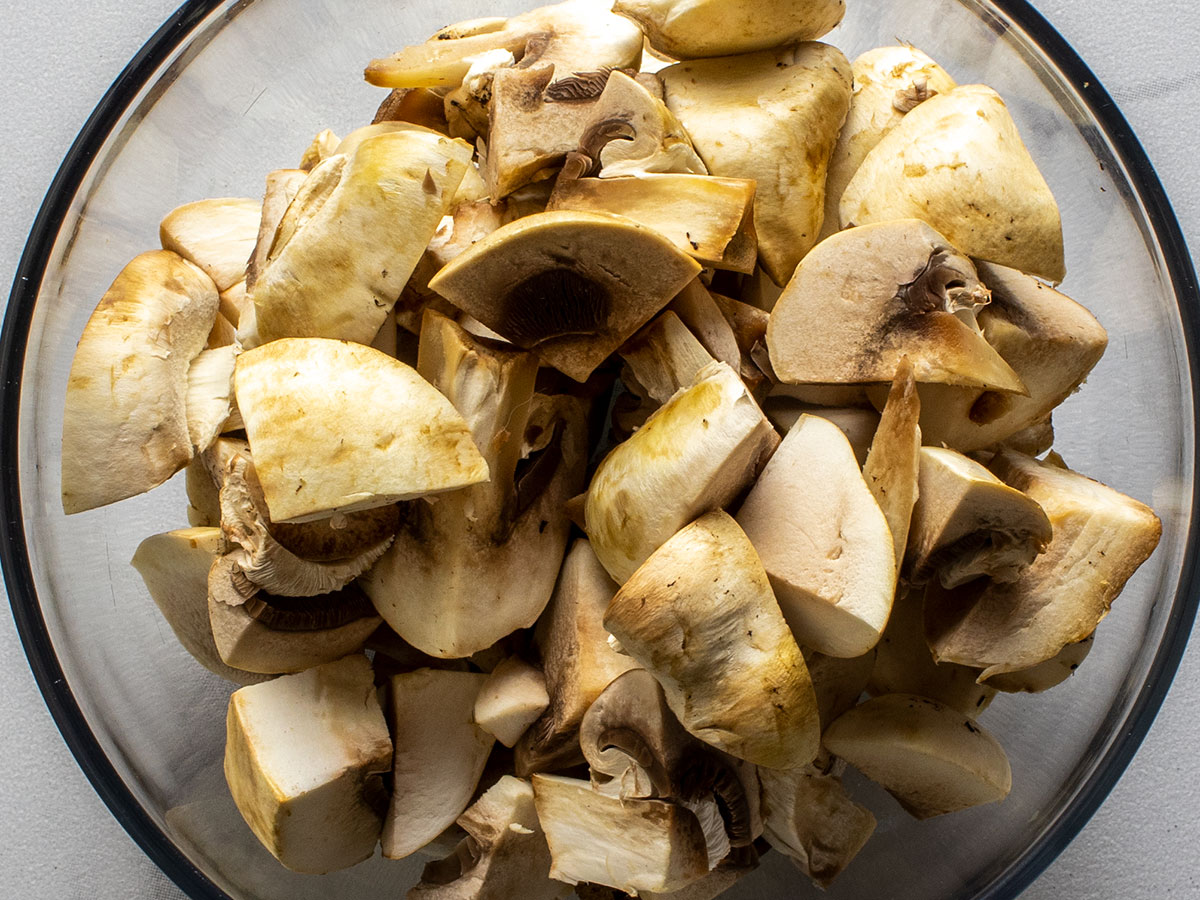
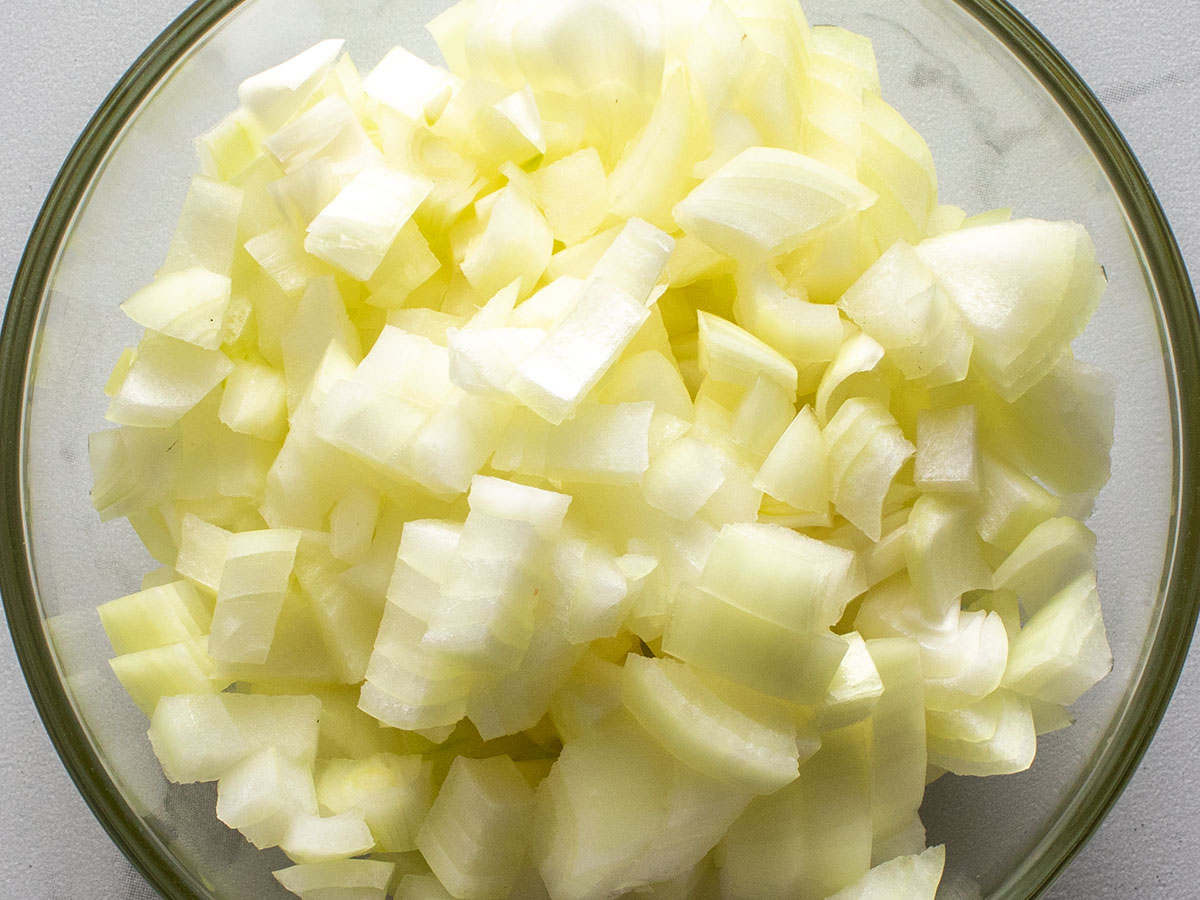
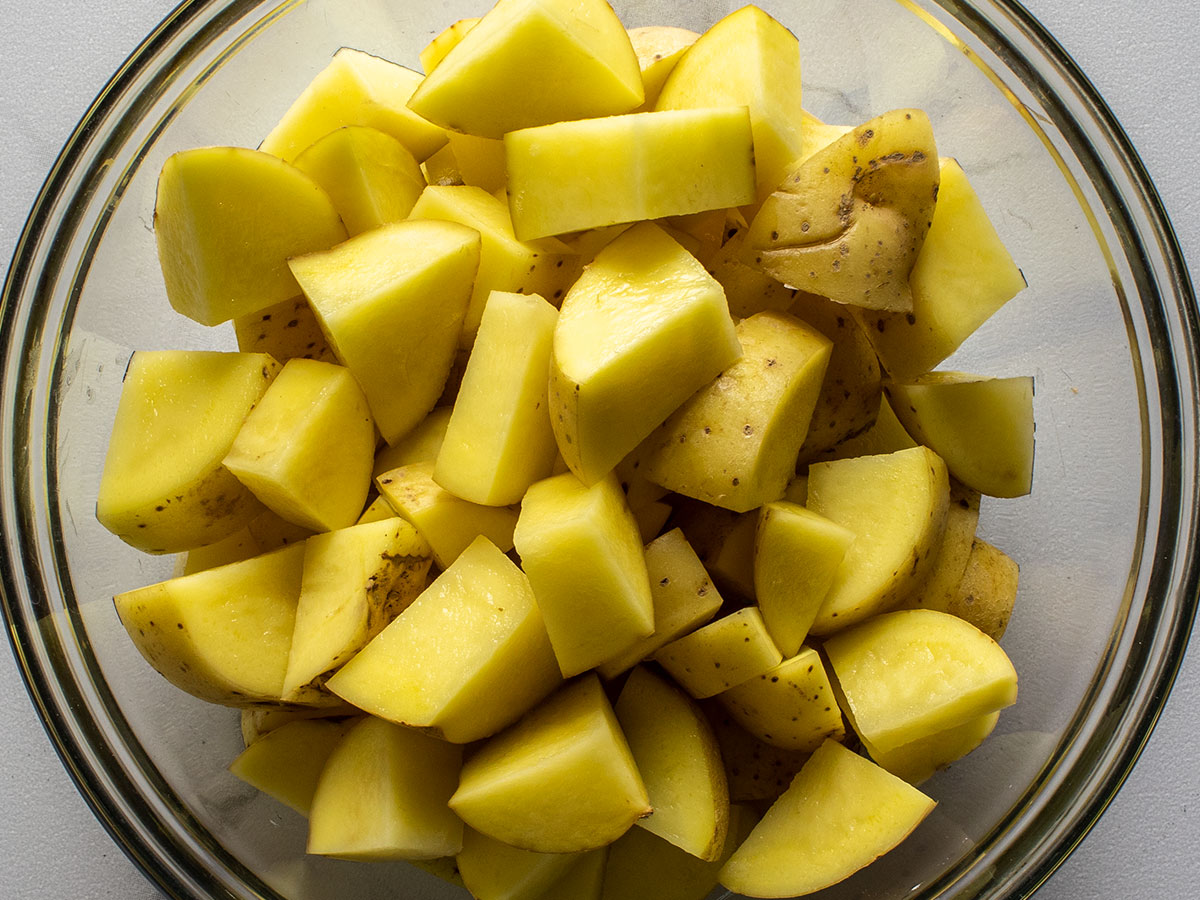

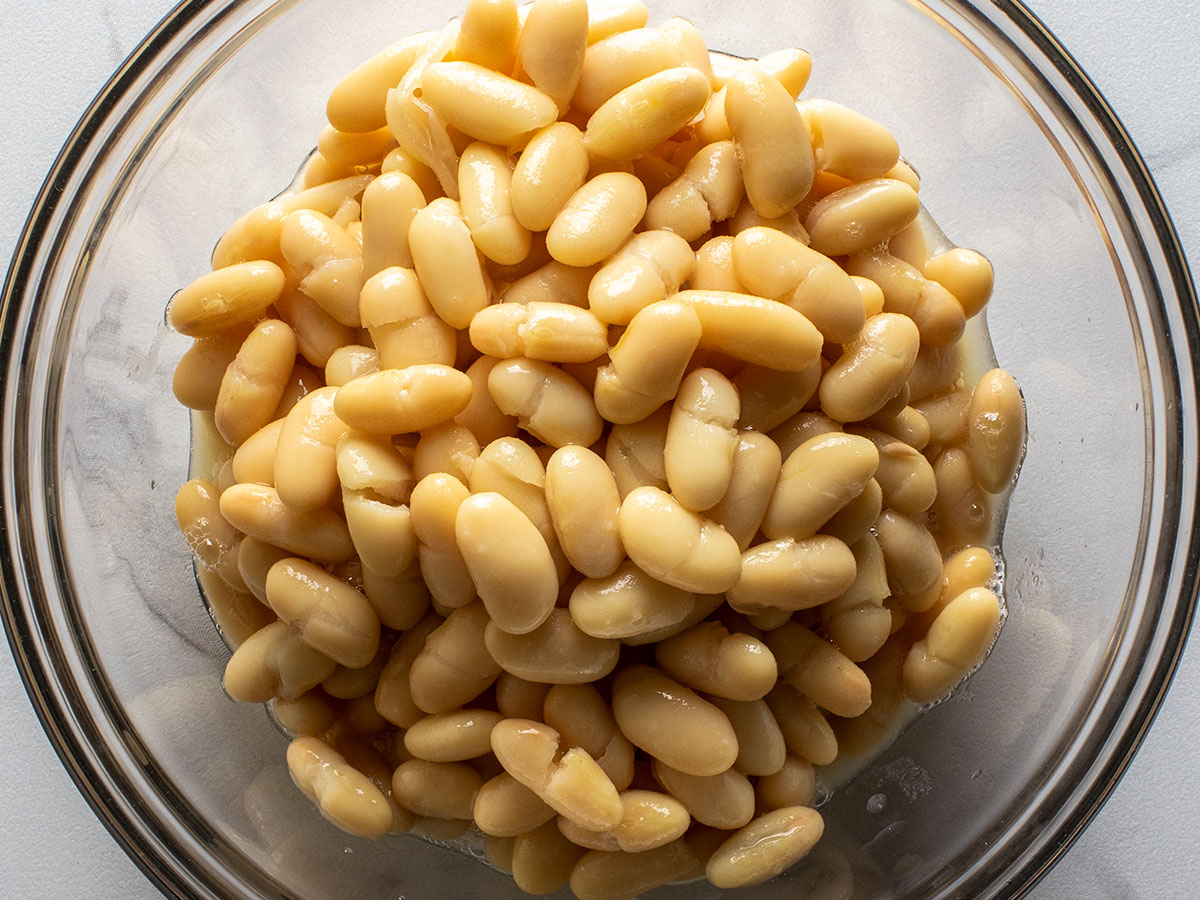
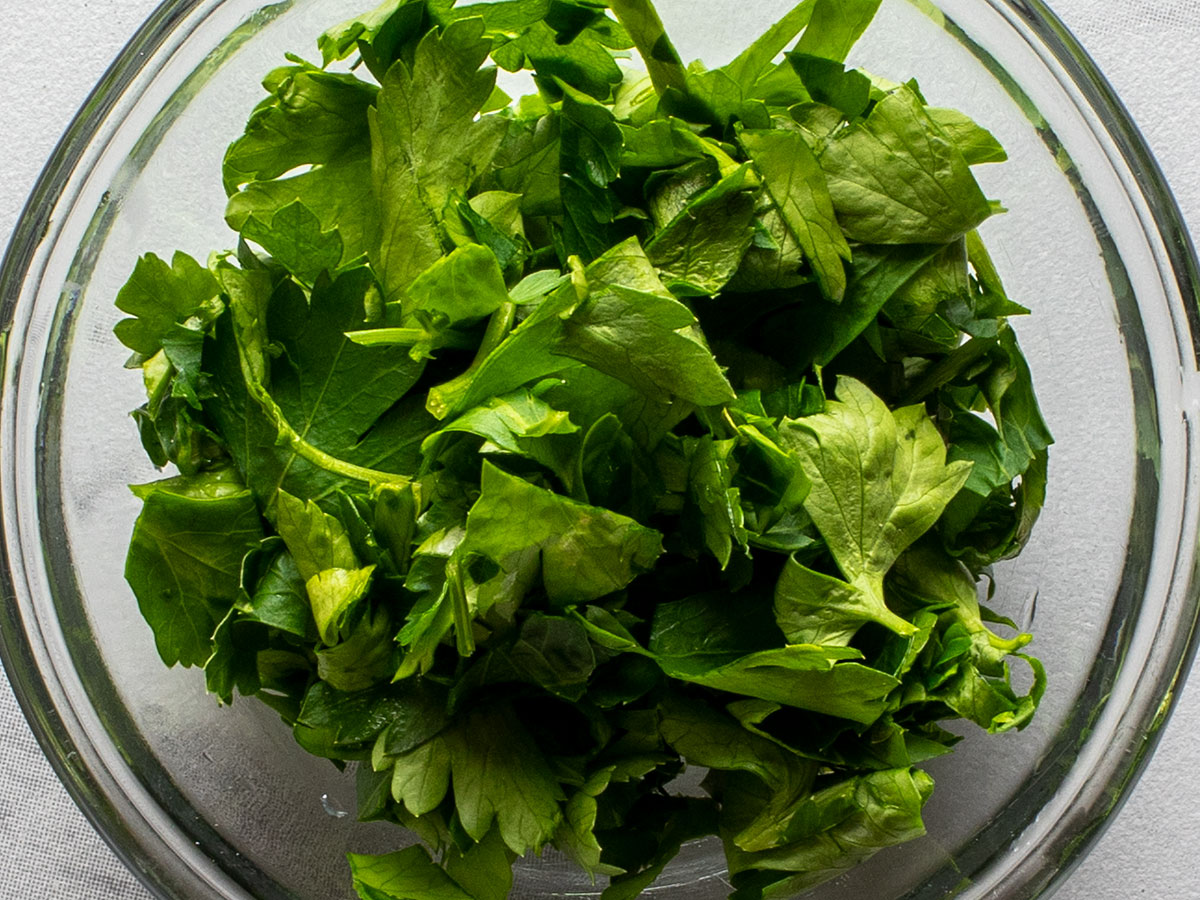
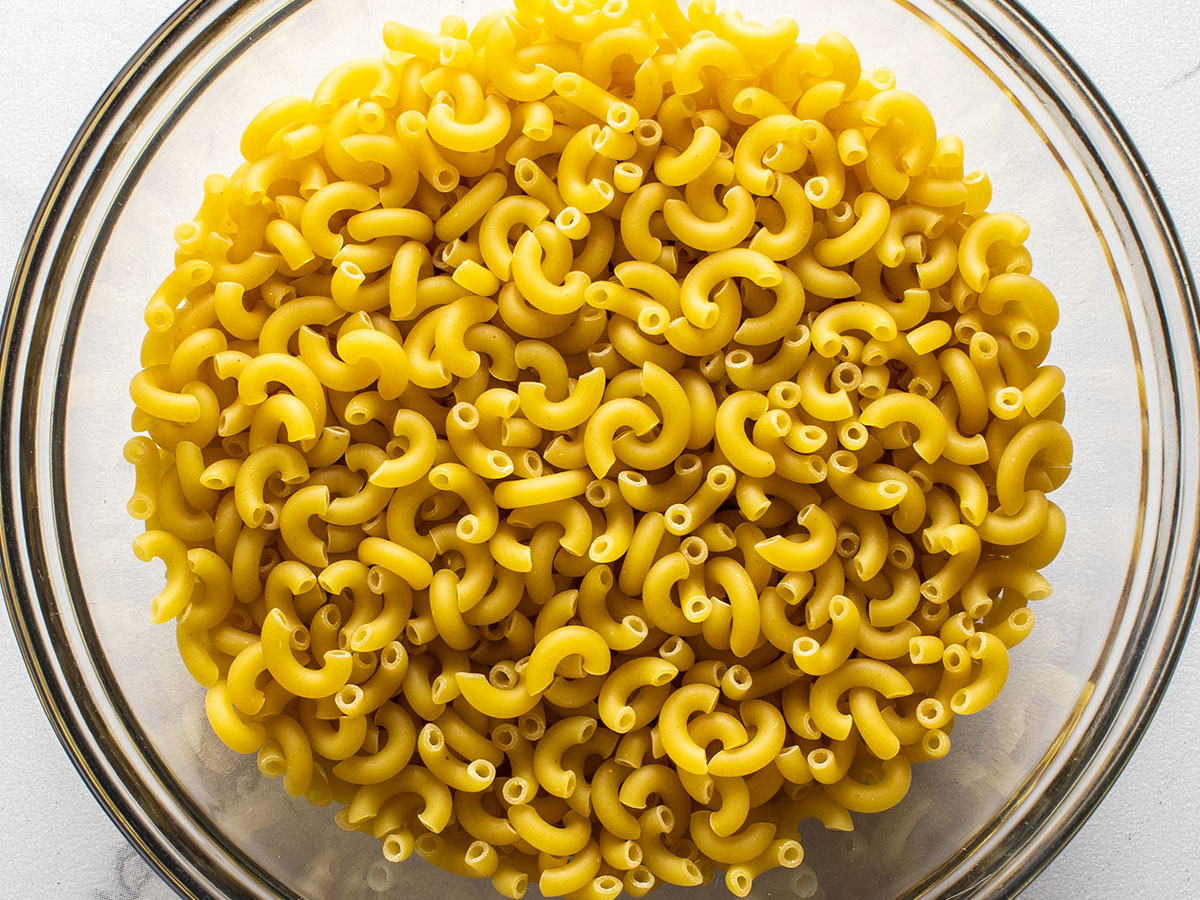
Pro Tip
When you think of potatoes, how often do you think of the differences between each type? If you’re like me, probably not too often. There are, however, distinct differences between them and if you’re interested in learning more about cooking, it’s good to become familiar with potatoes as a whole. The reason I bring this up is because many soups, such as this one, call for potatoes in their ingredient lists. Which to use?
Let’s talk about starch. Potatoes are full of it, but at varying levels. Starch is important as a part of a balanced diet, but you certainly don’t want to overdo it. Starch breaks down into glucose and that glucose is burned by the body as fuel. The brain uses glucose to function. Not enough is bad, too much is bad too. Just the right amount is perfect. Overall though, starch provides energy, fiber, and a sense of fullness. That’s a good thing.
Different potatoes contain different levels of starch. You’ll want to become familiar with these levels as you cook. Sometimes you’ll need a soft, fluffy potato that’s full of starch and sometimes you’ll need a low-starch waxy type potato. I’ll list the three different types of potatoes below as well as some examples of each.
- High Starch Potatoes: (dry, dense, fluffy, good deep fried and baked) Russets, Idahos, Sweet Potatoes
- Low Starch Potatoes: (moist, dense, waxy, good when boiled) New Potatoes, Red Potatoes, White Potatoes
- All-Purpose Potatoes: (medium starch, somewhat fluffy, decent when boiled) Yukon Gold, Red Gold, Kennebec
The next time you plan on cooking with potatoes, ask yourself what you’d like to see as an end result, a deep fried French fry or a boiled side dish. The type of potato you use can make a huge difference!
How to Cook Perfect Minestrone Soup
Minestrone soup is about flavor. The more you can produce with the ingredients you use, the better. In this section, I’ll discuss exactly how to work your ingredients to keep the salt requirements low and the flavor levels high.
I’d like you to consider two scenarios:
- First, think about boiling some pieces of carrot. You bring water in a pot to temperature and then toss the carrot pieces in. After a few minutes, you scoop the carrot from the pot to add to a bowl. You eat them. Mmmm – well maybe not.
- Second, think about adding some oil to a skillet and tossing the carrot pieces into it. Fry them up for a while until they soften and brown nicely and then add them to a plate. You eat them. Mmmm – much better than the boiled carrots.
You can cook almost anything by boiling it, but it certainly won’t taste very good. Boiling in unsalted water adds virtually no flavor to anything. The trick, when preparing vegetables, is to create what’s referred to as fond. Fond is the brown sticky substance that’s formed when frying meats and vegetables in a skillet, pan, or pot with oil or butter. You actually want the food to somewhat stick. That helps create the brown. The contact between the food and the pot needs to be prolonged in order to make fond. Avoid nonstick cookware, as that doesn’t do the job very well.
When you heat a pan sufficiently and then place certain protein and carbohydrate packed foods in it, the contact between the pan and the food alters the chemistry of the food itself and creates an enormously great tasting brown substance. This is the substance inexperienced cooks attempt to scrape with a spatula to throw away. That’s a mistake. Generally, what needs to be done is to add some water to the pan and the brown will dissolve into a sort of broth or gravy. In the case of making soup, simply add the water, stock, or broth to the same pan the vegetables were browned in and allow the fond to dissolve by itself. All that extra flavor will keep the salt content low. You simply won’t need to add as much. When creating fond, use cookware that’s made from cast iron, enameled cast iron, or stainless steel for best result.
The process or preparing this minestrone soup is the perfect opportunity to create some wonderfully tasting fond. After all, this recipe calls for quite a few different types of vegetables that contain plenty of sugars just waiting to be called upon. During the early steps, keep the veggies in the pot a bit longer than called for. Wait for the brown to form and keep browning longer than called for, without burning anything. You’ll taste the difference in the end.
Cooking Equipment Needed for Minestrone Soup
The equipment list for this post is short and basic. All you’ll need is a vegetable peeler, a chef’s knife, a cutting board, a set of measuring spoons, a liquid measuring cup, a can opener, a large skillet (really big) or a pot (enough to hold at least four quarts), and a wooden spoon.
How to Prepare Minestrone Soup
For complete and detailed instructions for preparing this soup, please see the recipe card below. This section is intended to give you a brief overview of the process as well as to show you some photos of the same.
The preparation of this soup really requires only a few steps. First, you’ll need to brown some vegetables. Second, you’ll need to boil some additional vegetables and the pasta. Finally, you’ll need to add the parsley and toast the bread. It’s that simple.
Brown the Vegetables
To start, add the oil to the pot and then add the carrots, mushrooms, celery, and potatoes. Cook for either 10-15 minutes until you get a light brown on them or continue cooking until a fond forms. This is a photo of the vegetables just after I added them to the pot. In my case, I doubled up the recipe and used a Dutch oven to fit everything.
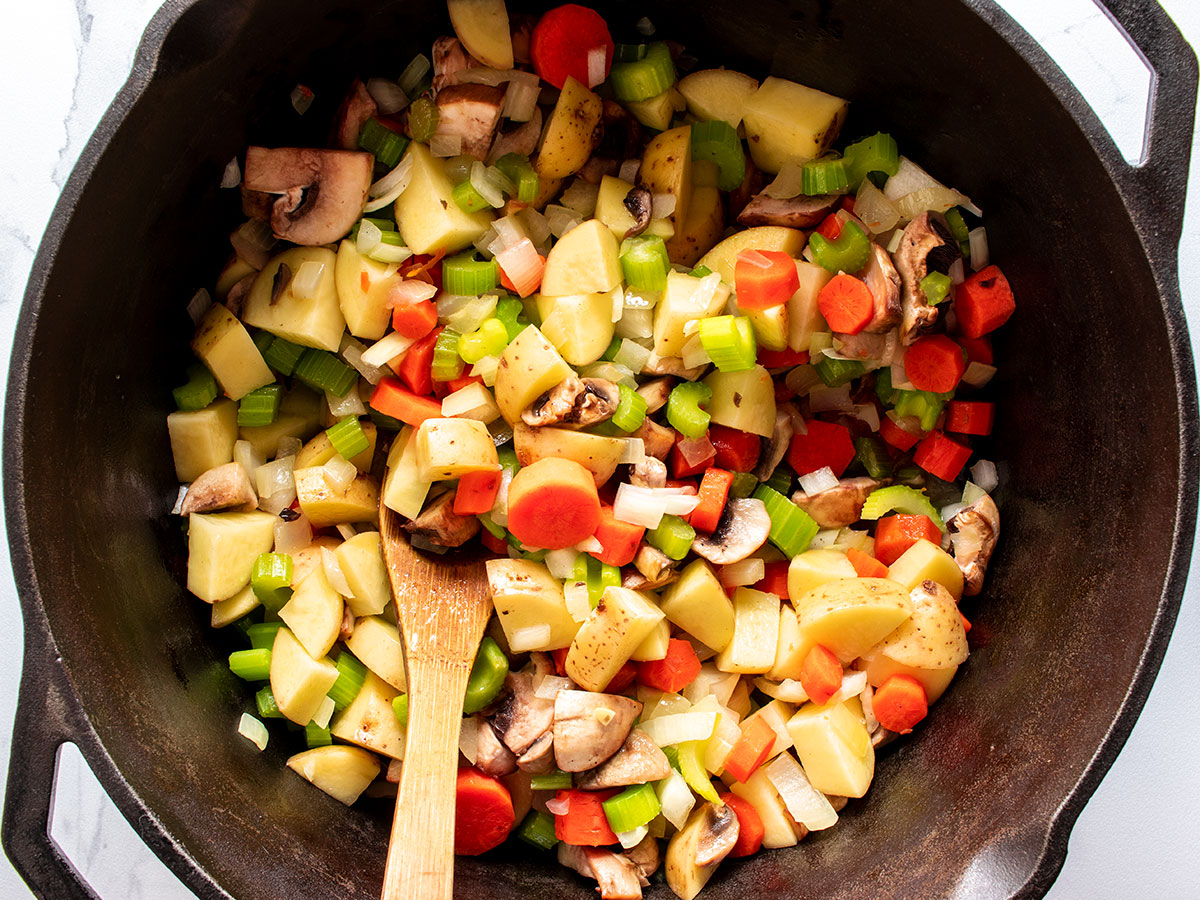
Simmer Remaining Vegetables
Add the stock, zucchini, beans, and seasoning. Bring the liquid to a boil and then reduce the heat and let simmer for 15 minutes.
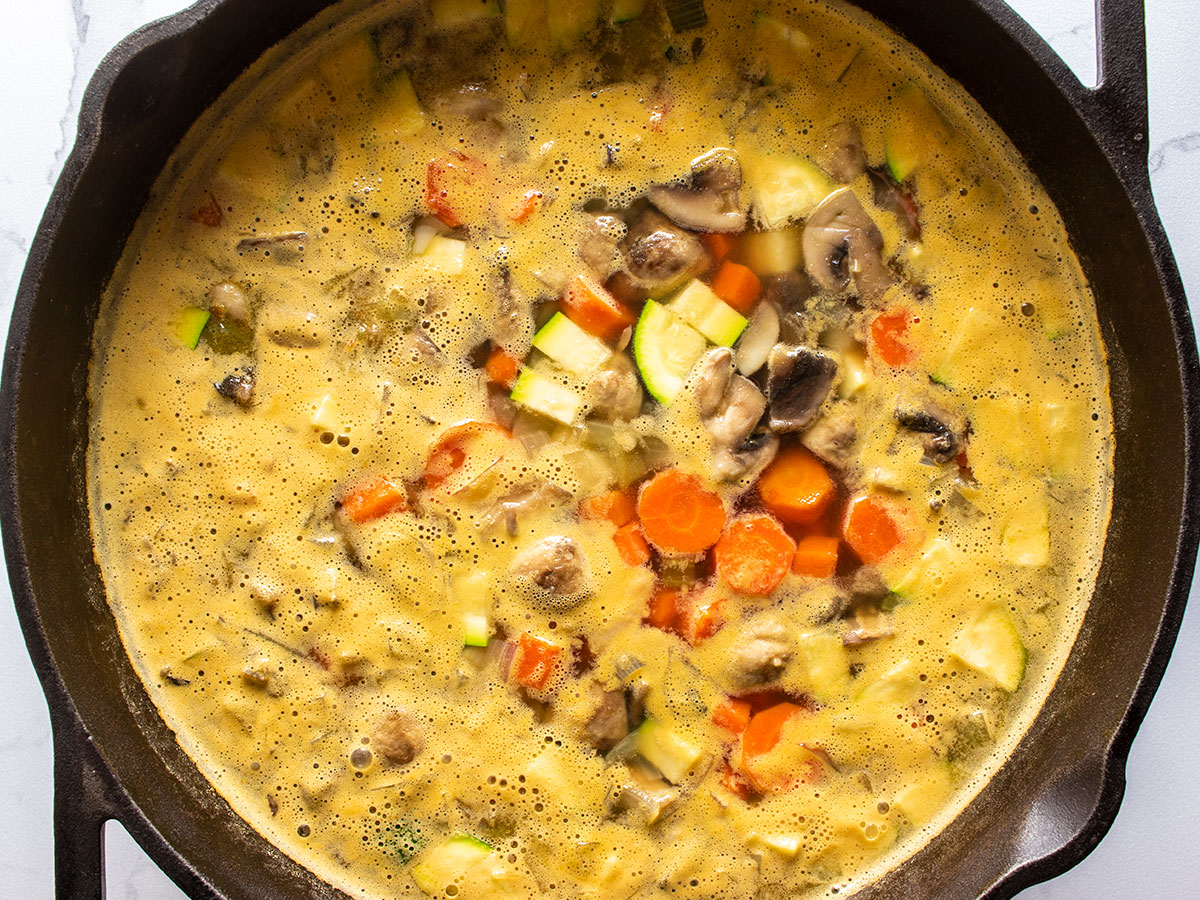
Cook the Pasta
Add the pasta and continue simmering the liquid for about eight more minutes, until the pasta is al dente.
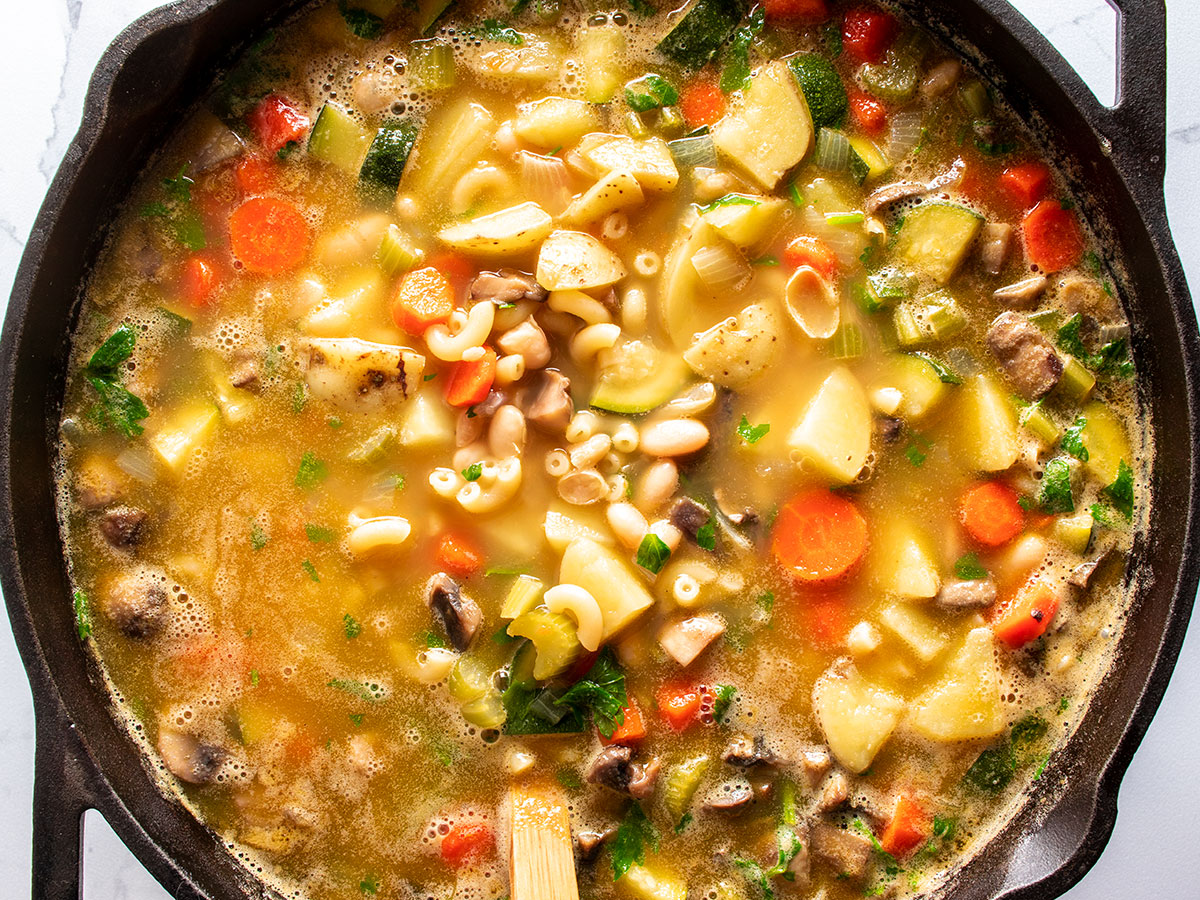
When the soup is finished, add the parsley, toast up some bread, season, and serve. That’s all it takes.
Substitutes & Additions
Since minestrone soup is a combination of what’s on hand, nearly everything can be substituted for something else. Below, I’ll list the most common substitutions and additions.
What to Substitute Carrots With
So many vegetables are similar to carrots. You can easily swap the carrots out and replace them with: parsnips, sweet potatoes, winter squash, rutabaga, turnip, daikon radish, celery root, or parsley root. Take your pick. All would create a nice fond.
What to Substitute Celery With
I think the closest and most appropriate substitutions for celery (for this soup) would be fennel, leeks, onion, or celeriac. These are excellent options that would offer the same or similar texture.
What Types of Potatoes to Use
Because high starch potatoes such as Russet or Idaho would become too soft in this soup, I’d stick with using Yukon Gold, Yellow, New, White, or Red. These contain less starch and are more waxy, for lack of a better word. They hold together well when boiled/simmered and will hold together well when kept as leftovers.
What Types of Mushrooms to Use
The most common type of mushroom you’ll see at the supermarket is of the White Button variety. For this recipe, use what you like most or what you can get your hands on. Any mushroom will do, including Baby Bella, Portobello, Oyster, Beech, Cremini, Porcini, and the like. Just be sure to get a good brown on them during the first step, as mushrooms have some incredible flavor inside of them, just waiting to be released by browning.
What to Add
We’ve already discussed the most common ingredients: carrots, celery, and potatoes. To add some interest, consider adding some tomato broth, green beans, Parmesan cheese, garlic, bay leaves, oregano, thyme, red pepper flakes, ground pork, turkey, or beef – think along those lines and you’ll have yourself one incredible soup in no time.
Dishes That Complement Minestrone Soup
Sometimes having a nice bowl of soup is enough. Sometimes it’s not. For those occasions when you’d like to add a side dish to your soup, I’ve got some good ideas. As for what I list below, choose what you’re in the mood for or what goes with the theme of what you’re eating. For instance, another vegetable dish might go well with the soup, depending on what you’ve added to the soup itself. There may be times though when you’ll want to go in a completely different direction – perhaps you’d like something with no vegetables at all. What I list below are only ideas. Take one or two and create your own side.
- Ham or Bacon
- Grilled Chicken
- Garlic Bread
- Brushetta
- Roasted Sweet Potatoes
- Roast Beef
- Pizza Pasta Bake
- Antipasto
- Pizza or Calzone
- Mozzarella Sticks
- Baked Potato
- Caesar Salad
- Dinner Rolls
- Grilled Cheese Sandwich
Wine Pairings for Minestrone Soup
Minestrone soup is wildly popular in the autumn and winter, probably because many vegetables that are used in the soup are harvested during the fall. And many can keep for weeks or months, allowing the preparation of the soup to remain viable well into the colder months. With the combination of fairly mild flavors and easy on the tongue textures, light to medium bodies wines are the order of the day. With this in mind, the following wine options are quite reasonable.
- Sangiovese
- Grenache
- Chianti Classico
- Barbera
- Montepulciano d’Abruzzo
- Pinot Noir
- Vermentino
- Rosé
- Rosso di Montalcino
- Chardonnay
Basically, what you’re looking for is wine that won’t take anything away from the soup. After all, it’s the soup you’re eating, not the wine you’re drinking. The wine can’t be too overpowering. Look for wine with soft tannins, light acidity, and that tastes fresh. Deep, dark reds wouldn’t be suitable for soups like minestrone. Medium bodied reds are good as well as are textured whites.
Can Leftover Minestrone Soup be Stored?
Have leftover minestrone soup? Looking to store it in the refrigerator or freezer? You’re in luck. You can store your leftovers in either one. Minestrone will keep in the refrigerator for about a week. It can keep in the freezer for a few months. Keep in mind though, freezing this type of soup will result in vegetables that can be somewhat softer after reheating. To reheat, simple use the microwave or stovetop.
Minestrone Soup
Equipment
- 1 Vegetable Peeler
- 1 Chef's Knife
- 1 Cutting Board
- 1 Set Measuring Spoons
- 1 Liquid Measuring Cup
- 1 Can Opener
- 1 Large Skillet or Pot
- 1 Wooden Spoon
Ingredients
- 6 Tablespoons Extra Virgin Olive Oil
- 2 Carrots Peeled & Diced
- 3 Celery Stalks Diced
- 1 Large Potato Peeled & Diced
- 2 Onions Chopped
- 8 Ounces Mushrooms (White Button) Chopped
- 10 Cups Vegetable or Chicken Stock
- 2 Zucchini Diced
- 16 Ounce Can Cannellini Beans
- ½ Pound Dry Pasta Small Shapes
- 1 Loaf Ciabatta Bread Sliced Thick
- 2 Cloves Garlic Peeled
- 3 Tablespoons Flat-Leaf Parsley Chopped
- ½ Teaspoon Salt
- ¼ Teaspoon Ground Black Pepper
Instructions
- Warm a large skillet or pot over medium-high heat on your stovetop.
- Add the olive oil to the skillet and then add the carrots, celery, potato, mushrooms, and onion.
- Cook for about 10 minutes or until the vegetables begin to brown. Stir occasionally.
- Increase the heat to high and add the stock. Bring to a boil and add the zucchini, beans, salt, and pepper. Reduce heat to medium low and let cook for 15 minutes.
- Add the pasta and continue cooking for about eight more minutes or until the pasta is al dente.
- Turn off the stovetop heat. Add the parsley to the soup, stir, and season if necessary.
- Toast some slices of the ciabatta bread. When ready, cut the garlic cloves in half and rub one side of the bread with the garlic to add flavor.
- Divide the soup between bowls, add some sliced bread to the side, and serve. Enjoy!
Notes
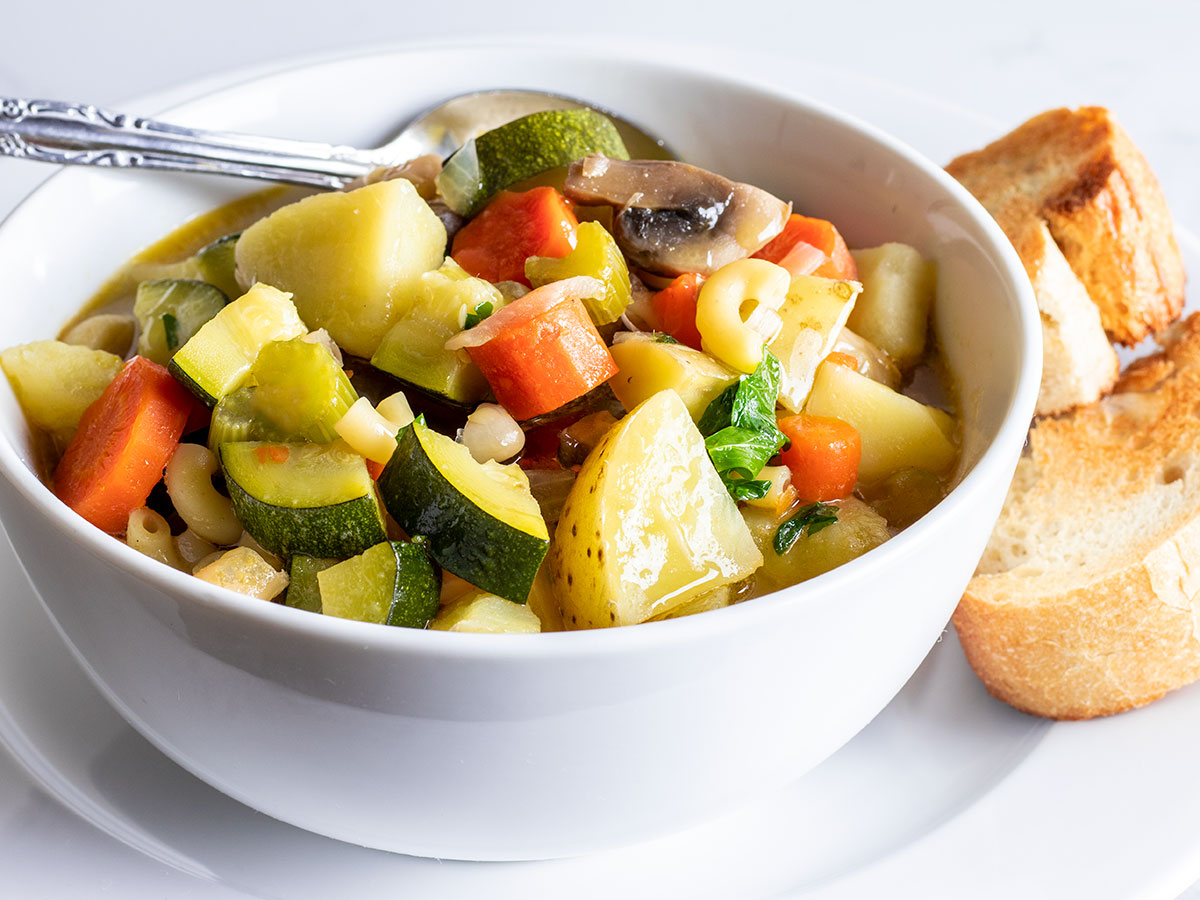
If you enjoyed this post, please consider sharing it on social media and signing up for my mailing list. That would help me out a lot. Also, if you have any questions or anything to add, please use the comment form down below. Thanks and enjoy!

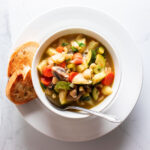
“I followed your minestrone soup recipe, and the results were amazing! The soup turned out rich and full of flavor. Thank you for this wonderful recipe.”
I try Minestrone Soup Recipe by Gino D’Acampo at home, its working great thanks
Your tip on boiling the veggies makes so much sense! I always wondered why my veggies tasted kind of bland, even when cooked properly. I had no idea that a little sticking was actually a good thing; it always felt like I was messing up. Definitely going to try sautéing them more and letting that fond develop. Thanks for the tip!